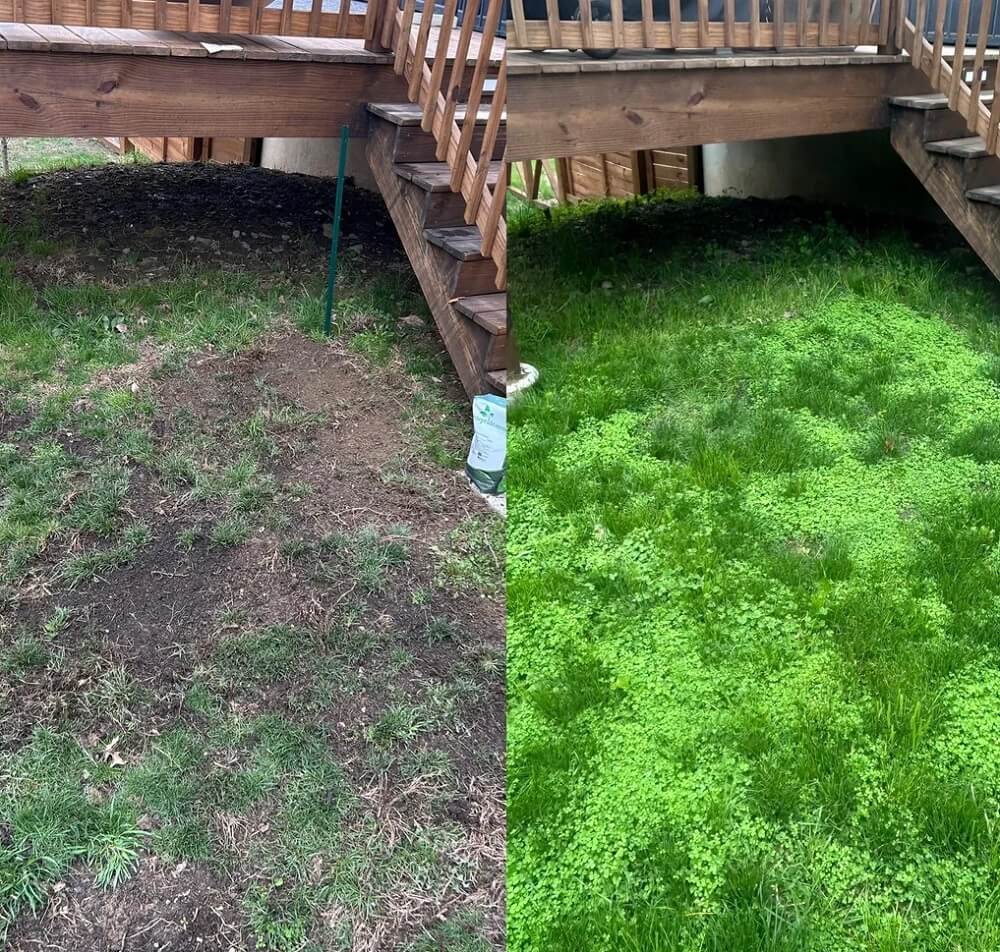Transforming a yard doesn't always require a major landscaping overhaul. For some homeowners, rethinking the plants they use is enough to change the look and function of their outdoor space.
One Reddit user demonstrated this possibility by sharing a quick and striking backyard update of using clover instead of traditional grass, offering a glimpse into what's possible with just a few weeks and a different approach.

In the post, the homeowner explains that they planted some clover in a dry, patchy yard. Less than a month later, it transformed into a dense, green carpet. The photos show a clear difference, with the new clover lawn creating a more even, healthy-looking surface that replaced the bare soil and weeds.
Swapping traditional turf grass for clover is becoming a popular move for homeowners looking to spend less time and money on their lawns. Clover needs less water, doesn't rely on chemical fertilizers, and often grows low enough that it barely needs mowing. Those changes can lead to lower water bills and way less maintenance while still creating a yard that looks full and green.
Monoculture lawns, or yards made up of one type of grass, are often more vulnerable to pests, disease, and weather extremes. They also require frequent inputs like fertilizer, weed control, and irrigation to stay healthy.
Clover, by contrast, is naturally drought-tolerant, fixes nitrogen in the soil, and resists many common lawn problems. That makes it a more resilient, low-impact choice, especially in areas prone to water restrictions or high summer temperatures.
TCD Picks » Upway Spotlight
💡Upway makes it easy to find discounts of up to 60% on premium e-bike brands
Besides the potential savings, clover and other native alternatives like buffalo grass, wildflowers, and xeriscaping also create more pollinator-friendly spaces. That means a healthier environment for bees and butterflies, which helps protect food crops and supports broader biodiversity, even in small yards. Additionally, because clover naturally adds nitrogen to the soil, it can improve yard health without added inputs.
Even replacing part of a conventional lawn with more sustainable plants can make a difference. Native and low-water yards are often better at handling heat and drought, and they usually stay greener without constant upkeep. Many people also find the change leads to fewer pests, better soil, and a yard they actually enjoy tending.
"Looks magical!" one commenter wrote.
"Love it! I don't know exactly what our landscaper used to establish the 'lawn' at our new house, but the clover is really taking over and I'm thrilled!" another added.
TCD Picks » Stasher Spotlight
💡Stasher's reusable food storage options make it easy and affordable to live life with less plastic
"Wow. What kind of clover? I've thrown some in my yard but it never seems to germinate," one Redditor asked, to which the original poster responded, "Dutch white clover - and the key to it was working new topsoil into the ground and raking the seeds into it so they were covered by fresh new dirt."
|
If you were to switch from a grass lawn to a more natural option, which of these factors would be your primary motivation?
Click your choice to see results and speak your mind. |
Join our free newsletter for easy tips to save more and waste less, and don't miss this cool list of easy ways to help yourself while helping the planet.

















